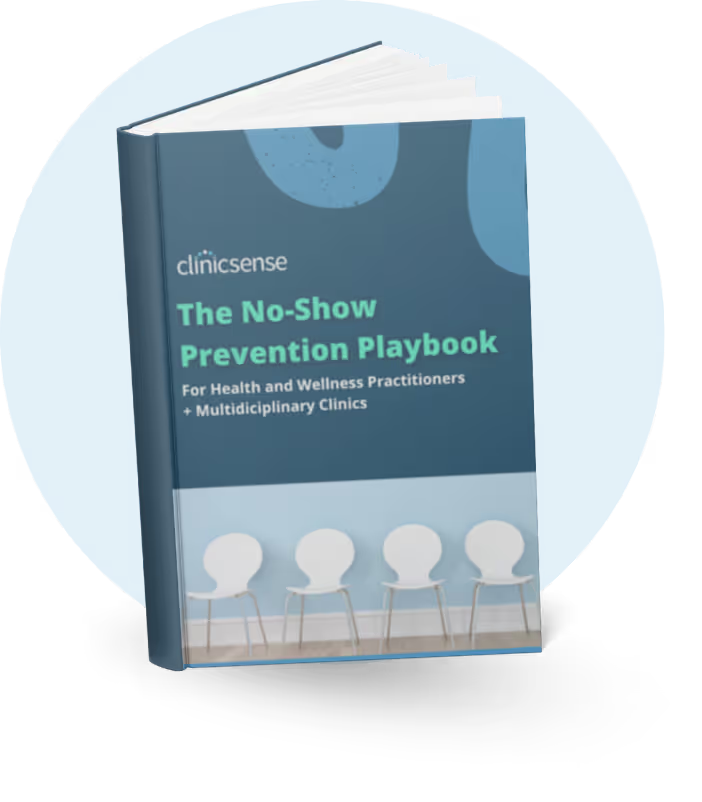Practice Management Tips
October 22, 2024

Getting clients to stick to their treatment plans is one of the most impactful ways to ensure lasting success—but it’s not always easy. By setting clear goals, addressing barriers, and using tools like SOAP notes and treatment packages, you can improve client commitment and follow-through on their care. This article will explore practical strategies and tools that help you create effective client treatment plans, fostering better adherence, stronger client relationships, and improved outcomes.
ClinicSense treatment packages help clients commit to a treatment plan by offering bundles of prepaid sessions, typically at a discounted rate. This encourages follow-through, as clients are more likely to rebook when they've already paid. The result is improved adherence to treatment and better outcomes.
There are several effective ways to use treatment packages in your business. Offering an introductory package at a discounted rate can motivate new clients to rebook. For long-term treatments, selling session bundles makes care more affordable. You can also combine services to create customized packages that address specific client needs. The flexibility of treatment packages allows you to tailor them to your clients and practice, ensuring they fit both their goals and your business strategy.
.avif)
Helping clients adhere to treatment plans involves setting clear goals, identifying potential barriers such as time or budget, and maintaining consistent communication. Educating clients, celebrating their progress, and involving them in the planning process, along with ongoing support, enhances commitment and strengthens the therapeutic relationship.
According to PsychCentral, “Receiving ongoing formal feedback from clients has clear-cut benefits. It’s been shown to boost the effectiveness of therapy, including enhancing clients’ wellbeing and decreasing dropout rates and no-shows.”
Setting clear goals is the foundation of a successful client treatment plan. When a client comes in with an issue like persistent back pain, it’s important to dig deeper than general pain relief. Ask, "How will we know we've succeeded?" Their answer might be being able to bend over and put on their shoes without pain or resuming their daily 2-mile walk. Once you’re both clear on what success looks like, you can tailor a treatment plan that aligns with their specific, actionable goals.
When developing client treatment plans, start by recognizing potential obstacles. Budget, time constraints, lack of motivation, or limited access to your practice can all hinder adherence. By addressing these challenges upfront, you can tailor the plan to fit their needs—whether it’s flexible payment options, adjusting session frequency, or recommending at-home exercises to keep them engaged between appointments.
Clear communication is key to ensuring clients understand their treatment, the expected progress, and the benefits. Without this knowledge, clients may develop unrealistic expectations or lose confidence in the process. For example, someone with severe back pain might expect complete relief after one session and feel discouraged when that doesn’t happen. Setting the right expectations about their recovery timeline, and how daily activities affect results, helps them stay engaged and committed to their massage therapy treatment plan.
Regular communication keeps clients on track. Even with the best intentions, it’s easy for them to let time slip by without following through. Many clients lose momentum simply because their treatment plan has fallen off their radar. Checking in regularly via text or email, and scheduling the next session before they leave, helps keep them engaged. Sending a follow-up message also shows that you genuinely care about their progress and wellbeing.
Creating a treatment plan should be a collaborative effort. While you bring the expertise in your field, clients are the experts on their own bodies. Their insights, ideas, and concerns should be part of the conversation. By setting goals and objectives together, clients feel more invested in the plan, which increases the likelihood that they'll stick with it. This partnership not only boosts adherence but also improves the overall success of the treatment plan.

Humans naturally focus more on negatives than positives—a survival mechanism known as negativity bias. This makes it harder for clients to notice gradual improvements in their progress. As their practitioner, the benefits of using SOAP notes become clear when you track even small gains over time. By keeping detailed records, you can point out improvements that clients may have overlooked, helping them stay motivated. Celebrating each step forward reinforces that they are getting closer to their goals, boosting their commitment to the treatment plan.
Ongoing support shows clients that you're truly invested in their wellbeing. Offering self-care resources, sharing helpful information through monthly newsletters, and taking time to answer their questions before or after a session fosters trust. Building time into sessions for these conversations and sending follow-up emails to check in—especially with new clients or those facing new issues—reminds them that you’re there to help. This level of care strengthens your relationship and encourages adherence to their treatment plan.
ClinicSense offers a whole suite of features to help you provide the care your clients need, and help your clients stay on track.
ClinicSense helps you build better client relationships and create treatment plans that work. Detailed SOAP notes are crucial for tracking progress and making adjustments. With a SOAP notes free trial or a free SOAP note template, you can start improving your practice and client outcomes immediately.


.avif)
.avif)
.avif)









For 14 days